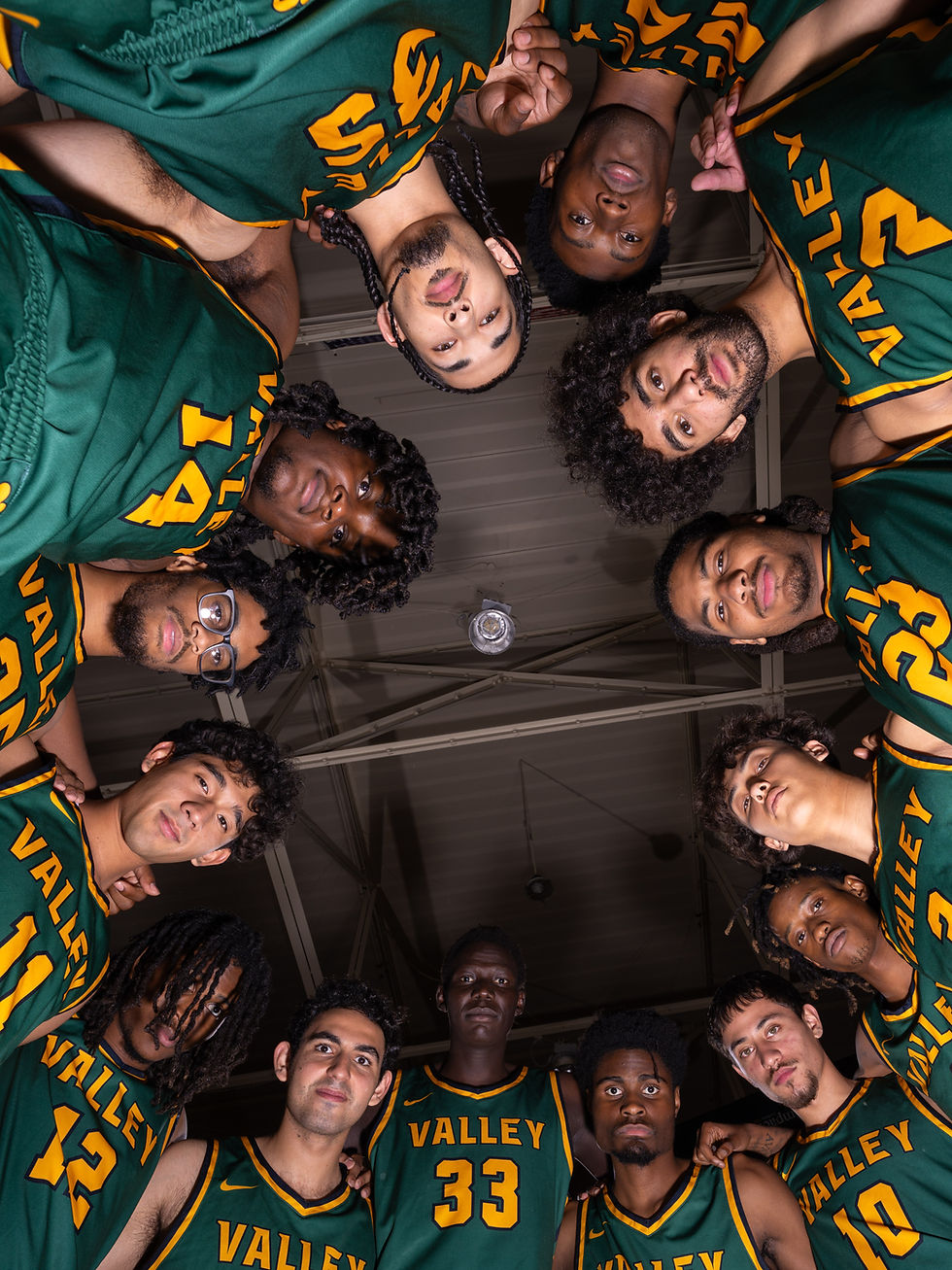March Madness Highlights the Need for Equal Compensation in the WNBA
- Kaia Mann
- May 6, 2024
- 3 min read
Women’s sports sparks rise through NCAA title game between Iowa and South Carolina, and so should their pay.
By: Alex Diaz, Sports Editor

As Iowa’s Caitlin Clark recently bid farewell to college basketball, 18.7 million viewers watched the confetti fall, moments before South Carolina celebrated its undefeated championship title on April 7th, marking the first time in history that the women’s championship game attracted more viewers than the men’s title game.
In recent years, the women’s college basketball championship games have helped women’s sports gain popularity and recognition. The 2024 NCAA title game between Iowa and South Carolina is the second most-viewed non-Olympic women’s sporting event on U.S. television following the 2015 Women’s World Cup Final.
Competitive sports have been male-dominated for many years, with male athletes often receiving more promotions and funding than their female counterparts. Although there has been progress in the success of female athletes, there is still a long way to go.
Title IX has been put into action to safeguard against sex discrimination in educational institutions that receive funding from the federal government and provides the essential foundation for ensuring progress toward gender equality in sports. Although sports were not a primary focus of the legislation, athletics is where we can observe the most significant and lasting effects of the bill.

During the NCAA collegiate basketball tournament, there have been some positive changes to ensure that women are given the same treatment as men. For instance, women’s games now can use March Madness marketing and have been granted access to better training facilities, as well as benefits such as state-of-the-art lounges, similar to those provided to male players. However, these perks are not enough to address the inequality that exists between the two leagues.
Since the 2024 WNBA draft, It is evident that female athletes in similar positions are paid significantly less than their male counterparts. While the NBA’s top 2023 draft pick, Victor Wembanyama, was signed for $55.2 million over four years, Clark’s four-year contract compensates her with $338,000, which is less than $100,000 per year. Additionally, basketball holds the biggest pay gap in sports, with female players earning an average of $113,295 compared to men’s average of $10.7 million.
Currently, the WNBA has a $60 million deal per year with media rights, which is set to expire in 2025. In contrast, the NBA has a massive $24 billion television deal, and they are looking to increase it to a staggering $72 billion in the upcoming summer. To increase the pay of women athletes, the WNBA needs to focus on boosting ticket sales and securing larger television contracts.
The impact of television broadcasting is a leading factor for sports. The exceptional performance of star athletes like Clark, Angel Reese, Paige Bueckers, and Kamilla Cardosa has captured the attention and admiration of fans. Clark, in particular, has become a prominent figure in the media with her appearances in commercials like State Farm and TV shows such as Saturday Night Live.

Endorsements are one of the main ways for athletes to earn a significant amount of money. Although college athletes receive compensation through partial or full athletic scholarships, student-athletes do not receive a salary. In 2021, the NCAA can no longer prohibit athletes from endorsements.
Since the release of many draftees’ contracts, it has been argued that they will earn most of their income from these deals. Clark, for example, has earned $3.1 million from NIL. Clark’s upcoming deal with Nike, reportedly over $20 million, has resulted in a surge of other endorsements.
The incredible skills and passion of these women athletes have made them role models for many people, bringing greater recognition to the sport. Their legacy is undeniably outstanding, but if they are not offered equal pay and recognition, their struggle will never end. These women have the potential to turn the WNBA into a billion-dollar industry, and they should not be ignored.




谷歌蜘蛛池搭建
谷歌快排
谷歌外链代发
谷歌留痕
谷歌蜘蛛池出租
谷歌快速排名
海外引流渠道
Telegram搜索引擎排名
巴西引流软件
谷歌霸屏技术
谷歌外推软件
四方支付系统
四方支付源码系统
四方支付系统源码
四方支付程序
四方支付平台源码
四方支付系统搭建
四方支付程序
四方支付平台搭建
四方支付系统源码系统
四方支付系统源码
go语言四方支付
四方支付系统源码2025
四方支付
四方支付系统
谷歌蜘蛛池搭建谷歌蜘蛛池搭建
谷歌快排谷歌快排
谷歌外链代发谷歌外链代发
谷歌留痕谷歌留痕
谷歌蜘蛛池出租谷歌蜘蛛池出租
谷歌快速排名谷歌快速排名
海外引流渠道海外引流渠道
Telegram搜索引擎排名Telegram搜索引擎排名
巴西App推广引流 巴西引流软件
谷歌霸屏 谷歌霸屏技术
谷歌外推软件谷歌外推软件
四方支付系统四方支付系统
四方支付源码系统四方支付源码系统
四方支付系统源码四方支付系统源码
四方支付程序四方支付程序
四方支付平台源码四方支付平台源码
四方支付系统搭建四方支付系统搭建
四方支付程序四方支付程序
谷歌快排谷歌快排
四方支付平台搭建四方支付平台搭建
谷歌蜘蛛池搭建谷歌快排
谷歌蜘蛛池搭建技术谷歌蜘蛛池
四方支付系统源码系统四方支付系统源码系统
谷歌快排谷歌快排是怎么做的
谷歌快排谷歌快速排名
谷歌外链代发如何发布谷歌外链
谷歌霸屏谷歌霸屏技术
四方支付系统源码golangpay
go语言四方支付go语言支付系统
四方支付系统源码2025四方支付系统源码2025
四方支付四方支付系统源码2025
谷歌蜘蛛池搭建谷歌蜘蛛池搭建
最快的四方支付系统最稳定的四方支付
四方支付系统四方支付系统源码2025
谷歌蜘蛛池搭建谷歌蜘蛛池搭建
谷歌快排谷歌快排
谷歌外链代发谷歌外链代发
谷歌留痕谷歌留痕
谷歌蜘蛛池出租谷歌蜘蛛池出租
谷歌快速排名谷歌快速排名
海外引流渠道海外引流渠道
Telegram搜索引擎排名Telegram搜索引擎排名
巴西App推广引流 巴西引流软件
谷歌霸屏 谷歌霸屏技术
谷歌外推软件谷歌外推软件
四方支付系统四方支付系统
四方支付源码系统四方支付源码系统
四方支付系统源码四方支付系统源码
四方支付程序四方支付程序
四方支付平台源码四方支付平台源码
四方支付系统搭建四方支付系统搭建
四方支付程序四方支付程序
谷歌快排谷歌快排
四方支付平台搭建四方支付平台搭建
谷歌蜘蛛池搭建谷歌快排
谷歌蜘蛛池搭建技术谷歌蜘蛛池
四方支付系统源码系统四方支付系统源码系统
谷歌快排谷歌快排是怎么做的
谷歌快排谷歌快速排名
谷歌外链代发如何发布谷歌外链
谷歌霸屏谷歌霸屏技术
四方支付系统源码golangpay
go语言四方支付go语言支付系统
四方支付系统源码2025四方支付系统源码2025
四方支付四方支付系统源码2025
谷歌蜘蛛池搭建谷歌蜘蛛池搭建
最快的四方支付系统最稳定的四方支付
四方支付系统四方支付系统源码2025
AV在线看 AV在线看;
自拍流出 自拍流出;
国产视频 国产视频;
日本无码 日本无码;
动漫肉番 动漫肉番;
吃瓜专区 吃瓜专区;
SM调教 SM调教;
ASMR ASMR;
国产探花 国产探花;
强奸乱伦 强奸乱伦;
AV在线看 AV在线看;
自拍流出 自拍流出;
国产视频 国产视频;
日本无码 日本无码;
动漫肉番 动漫肉番;
吃瓜专区 吃瓜专区;
SM调教 SM调教;
ASMR ASMR;
国产探花 国产探花;
强奸乱伦 强奸乱伦;